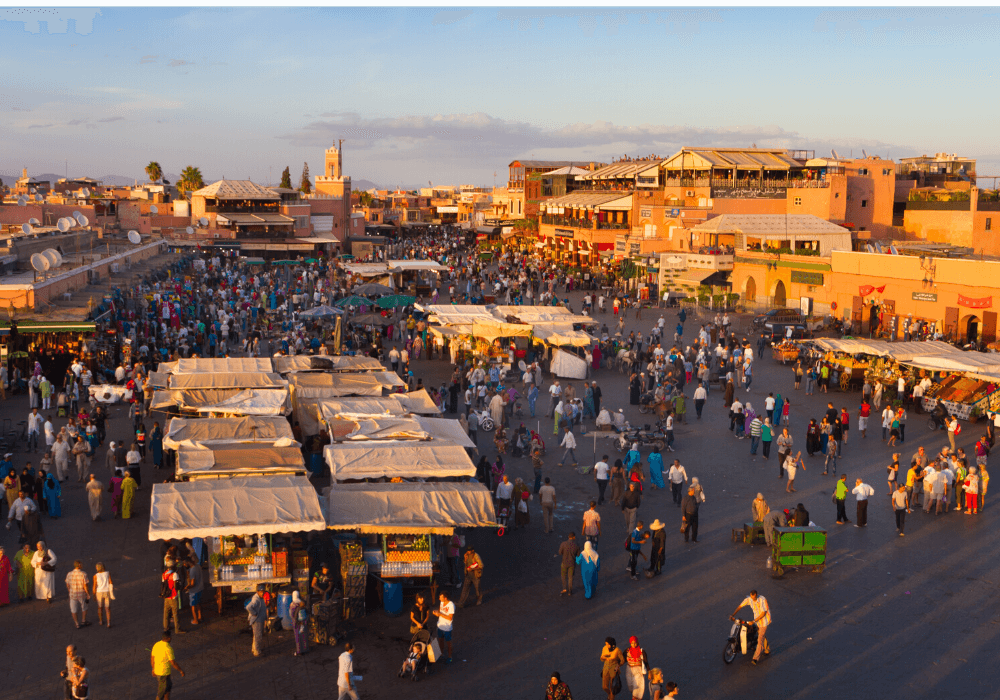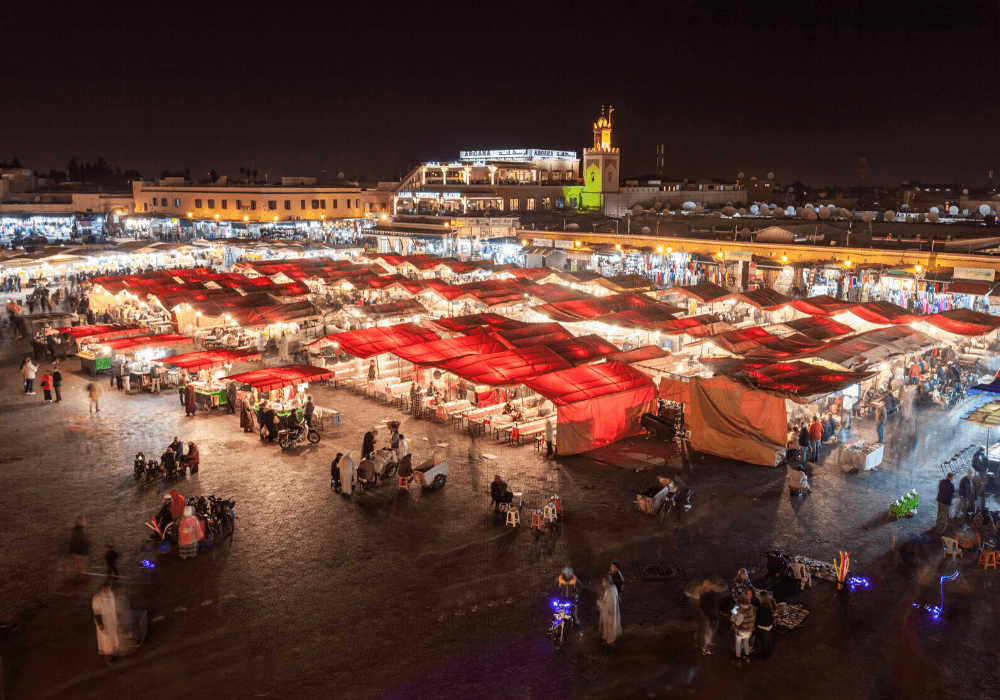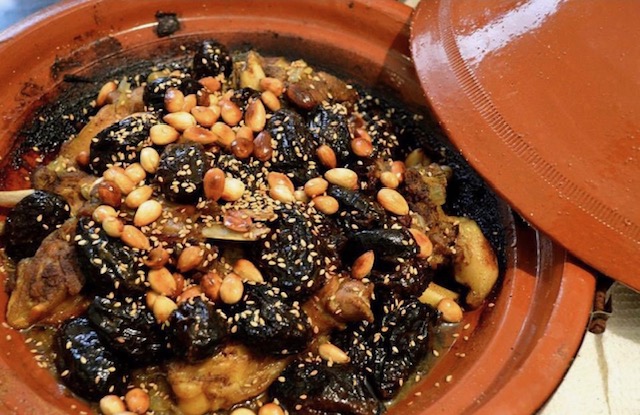
Mentioning the name Jemma el Fena evokes an authentic experience of Moroccan history, culture, and traditions that every tourist seeks.
This article serves as a complete guide to exploring Jemma el Fena, a historic square at the heart of the ancient Medina in Marrakesh.
Table of Contents
Historical Background of Jemma el Fena
Jemma el Fena square has a rich history dating back to the 12th century. In medieval times, it served as an esplanade for public acts of justice, even executions, which were displayed as a warning to the populace. This grim history explains the name “the Congregation of the Dead.”
Throughout its extensive history, Jemma el Fena has worn many hats.
It was once an encampment for military parades and later became a bustling hub for business transactions.
Merchants traded gold, spices, ivory, camels, and even slaves on these cobblestone streets. Notably, this vibrant location has earned recognition as a UNESCO World Heritage site.
The Diversity of Jemma el Fena
To your left, a troupe of street comedians and storytellers narrating daily life events while people gather around them in a circle, some laughing, some just curious and others collecting money.
Exploring the Souk of Jemma el Fena is a one-of-a-kind experience that should be on every traveler’s bucket list. This lively square is an agora of market stalls, artisan shops, and a myriad of entertainers.
Storytellers, Herbalists, and Healers:
To your left, you’ll find street comedians and storytellers narrating daily life events, while people gather around them in fascination.
You’ll walk past Saharan herbalists and healers concocting medicines and mixing plants into potions.
The Snake Charmers:
Imagine yourself taking a stroll down the Main Square, to your right, a troupe playing traditional musical instruments like castanets and lutes, a rattlesnake alluringly swaying to folkloric melodies.
You get completely immersed in the mysterious scenery where the dancers are completely entranced by the hypnotizing African rhythms while the snake charmer works his magic.
Horse Carriages and Artisan Shops:

At the foot of the Square are a line of graceful horse carriages waiting for tourists to take them on a tour of the old Medina, deep into the small shops, beautiful flower arrangements and bazaars selling artisanal jewelry, clothing, decorative pieces of furniture, sculptures and antiques.
These small shops display an array of breathtaking rainbow-colored items in an attempt to entice buyers and spike tourists’ interest.
They offer traditional handmade slippers, caftans in all types of fabrics and textiles, and vintage leather purses meticulously made by master craftsmen.
Shopping in such a culturally charged environment can be an experience in itself and with some good-natured bargaining tourists can acquire many of the wonders these traditional shops have to offer.
From Day to Night

As dusk begins to fall and afternoon gradually shifts into evening, Jemma el fena slowly begins its nightly transformation into a makeshift food market.
As food stall owners arrive one by one, pushing their metal trolleys and unpacking produce, the food preparations begin.
With the very first clouds of barbecue smoke, Jemma el fena’s metamorphosis from day to night is marked as complete.
Food stalls in the Main Square offer one of the most authentic Moroccan food experiences any tourist should hope for.
The smoke, the haze, and the crowd combined with the expansive range of local foods on the menu might take you off guard for a moment, but getting lost is all part of the experience.
Jemaa el fena Food stalls
Barbecue, couscous, and pastilla
Lit by lanterns and hanging fluorescent light bulbs, these foods stalls present a myriad of traditional Moroccan dishes such as Couscous and pastilla -typically made from shredded chicken, ground almonds, cinnamon, and sugar all wrapped into thin layers of dough.
In addition to barbecues and grilled meats, such as spicy merguez sausages and kebabs made from lamb, beef, goat or chicken. The meats are usually displayed on skewers and are ready to be grilled on demand.
As Moroccan cuisine goes, you would find that spices are of crucial importance in cooking traditional dishes and seasoning meat.
Anyone who has tried a barbecue at Jemma el Fena food stalls can attest to the remarkable preparation of the meat, which is tender from the very first bite…
Harira soup and chebakia
Another Moroccan food staple is Harira, a soup with a tomato base, chickpeas, lentils, and small cuts of meat.
It is a very famous dish that makes an appearance at every Moroccan table especially during religious holidays and sacred occasions like Ramadan.
It’s usually accompanied by sweets called Chebakia: a Moroccan pastry arranged from strips of dough into a rose, that is then deep-fried, coated in a mixture of honey and rosewater and sprinkled with sesame seeds.
Chebakia, as delightfully delicious as it is, has the perfect ratio of crunchiness to chewiness for any sweet tooth out there.
Authentic Marrakeshi Tanjia
Among the many traditional dishes in Jemma el Fena is Tanjia, cooked in a tall jug-like clay pot where lamb shoulder is mixed with Smen (fermented butter), preserved fruit, lemons, olive oil, and a variety of herbs and spices.
The slow cooking process enhances the flavors and tenderness of the meat.
Moroccan Tajine

Tagine, one of the most famous Moroccan dishes, is cooked in a wide, circular, shallow dish with a lid shaped like a cone.
It typically consists of seasonal vegetables, dried fruit, meat or poultry, and a blend of herbs and spices. Tagine is meant to be eaten by hand, with bread used to dip into the sauce, capturing the flavors of the vegetables and meat.
In summary, Jemma el Fena is a dynamic and historically rich square that offers a multitude of cultural experiences and a wide array of traditional Moroccan cuisine.
Whether you’re interested in history, shopping, or indulging in delicious local food, this square has something to offer every traveler.